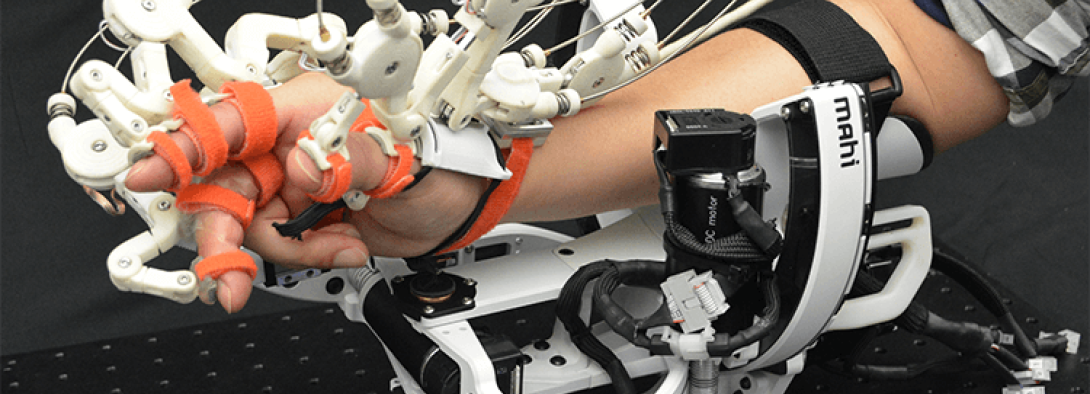Robotic devices are excellent candidates for delivering repetitive and intensive practice that can restore functional use of the upper limbs, even years after a stroke. Rehabilitation of the wrist and hand in particular are critical for recovery of function, since hands are the primary interface with the world. However, robotic devices that focus on hand rehabilitation are limited due to excessive cost, complexity, or limited functionality. A design and control strategy for such devices that bridges this gap is critical. The goals of the research effort are to analyze the properties and role of passive dynamics, defined by joint stiffness and damping, in the human hand and wrist during grasping and manipulation, and then mimic such properties in a wrist-hand exoskeleton for stroke rehabilitation. The project will culminate with device testing in collaboration with rehabilitation clinicians.
A significant problem in robotic rehabilitation is how to provide assisted movement to the multiple degrees of freedom of the hand in order to restore motor coordination and function, with a system that is practical for deployment in a clinical environment. Armed with a clearer understanding of the mechanisms underlying passive dynamics and control of systems exhibiting such behavior, this project will inform the design of more effective wrist/hand rehabilitation devices that are feasible for clinical use. In addition, the project will create a unique interdisciplinary environment enabling education, training, and co-advising of graduate students, undergraduate research, and significant and targeted outreach activities to underrepresented groups in science and engineering.
Publications
E. Pezent, Rose, C. G., Deshpande, A. D., and O'Malley, M. K., “Design and characterization of the OpenWrist: A robotic wrist exoskeleton for coordinated hand-wrist rehabilitation”, International Conference on Rehabilitation Robotics (ICORR). IEEE, London, UK, 2017.

